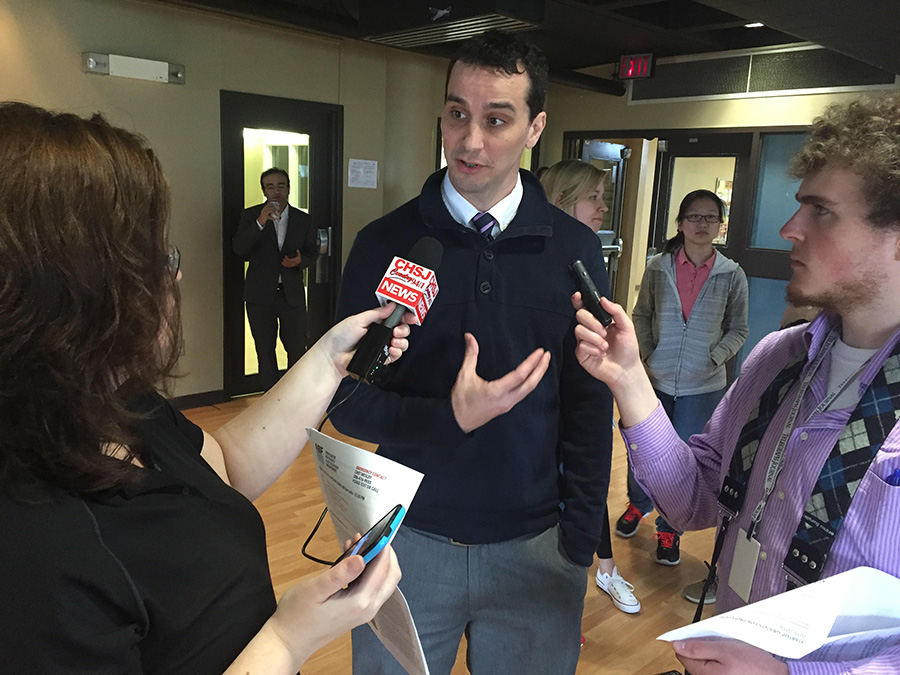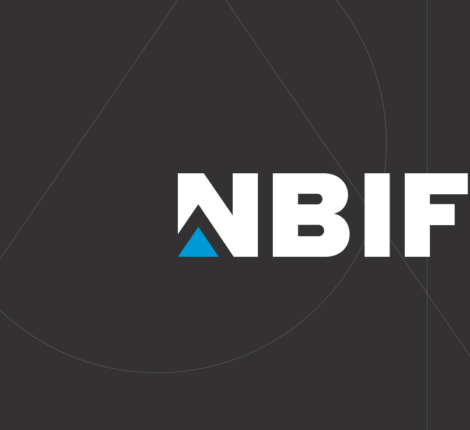- May 10, 2016
- Applied Research
- Comments : 0
New researchers set to impact NB economy
Part of a $2.7 million investment in talent recruitment, NBIF helped install seven new professors and researchers at post-secondary institutions in New Brunswick. Of that amount, $520,000 was awarded to help attract them to the province and set up their labs.
“Since our inception, we have awarded over $3 million to help to recruit 57 new applied researchers to the province, 85% of whom are still here. Since then, those researchers have attracted $34 million more from federal granting agencies, plus millions more from industry,” says NBIF chair Cathy Simpson, “considering those results, I’d say we are all doing something right.”
One of those researchers is Dr. Scott Bateman, a rising star in human collaboration processes and software at the University of New Brunswick. For more than a decade, people around the world have been using hundreds of different kinds of software to interact and collaborate with each other, like Skype, Webex, and GoToMeeting, all optimized desktop use. As the number of cellphone users in the world creeps past two billion, more and more people are relying on smart devices to do their job on the run. Dr. Bateman is working on ways to significantly improve what humans can do collaboratively.
“Say, for example, a technician needs on-site support to solve a mechanical problem. It’s one thing to be able to take and send a photo or video, and another to allow experts to be able to see it live, point things out, circle and draw things on the screen in the moment,” says Dr. Bateman, “one thing we’re working on is to allow both sides to interact with their smart device, something that isn’t very well developed at the moment.” He says when completed, users will be able to move and zoom the camera without losing any drawings or notations.
“If you move the camera to the right, whatever you marked or noted on the screen will disappear,” he says, “and if you move the camera back to the first location, what was there will reappear.”
Another researcher is Dr. Luc Boudreau at the Université de Moncton, who Simpson touts as a researcher entrepreneur.
“Dr. Boudreau is the co-inventor of a patented technology that detects inflammatory diseases–that’s the research part. “He’s also founder of Naturo-Bee, a startup in Moncton that makes anti-inflammatory creams using propolis, a chemical that bees naturally produce,” says Simpson, “one of the many things we do at NBIF is to get research into the hands of industry, and business problems into the hands of researchers. Dr. Boudreau is a metaphor for what we are doing for the economy at large.”
The other recipients include:
Dr. Anna Ignaszak, a chemist at UNB who is developing metal-free energy storage systems for zero-emission vehicles.
Dr. Mohsan Mohammadi also from UNB, an expert in light-weighting, the most acclaimed method for reducing carbon emissions by safely and effectively reducing the weight of heavy equipment, especially aircraft.
Dr. Suprio Ray, a computer scientist at UNB who specializes in big data analytics, the Internet-of-Things and leader of the Big Data Systems and Analytics Lab
Dr. Gobinda Saha, an engineer at UNB who designs smart composite materials and “nano-machines.”
Nadler Simon, now an agronomist and soil dynamics researcher at CCNB’s Biotechnology Scale-up Centre in Grand Falls.


